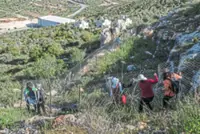Rusty elements and rubbles remain on the site of the former Svea coal mine which operated from 1917 until 2020 in northern Norway. — AFP
AT the old Svea mine in the Arctic, broken railway tracks overgrown with weeds lead nowhere. Of the hundred buildings that once made up the town, there’s almost nothing left.
Coal brought fortune to Norway’s Svalbard archipelago, but that bonanza became a curse for the remote group of islands – coal is now considered the most harmful fossil energy for the climate.
Already a subscriber? Log in
Save 30% OFF The Star Digital Access
Cancel anytime. Ad-free. Unlimited access with perks.





